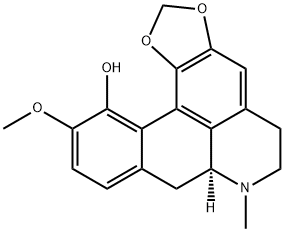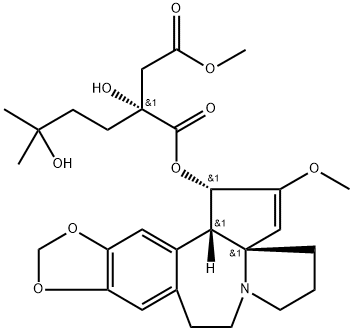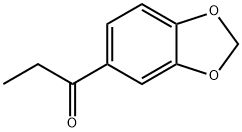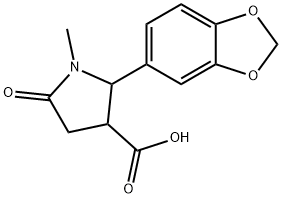DIHYDROSAFROL
- CAS NO.:94-58-6
- Empirical Formula: C10H12O2
- Molecular Weight: 164.2
- MDL number: MFCD00022999
- EINECS: 202-344-9
- SAFETY DATA SHEET (SDS)
- Update Date: 2024-12-18 14:07:02

What is DIHYDROSAFROL?
Description
Dihydrosafrole is an oily liquid. Molecularweight=164.22; Boiling point=228℃; Wiswesser linenotation: T56 BO DO CHJ G3.
Chemical properties
Light Yellow Oil
Occurrence
Has apparently not been reported to occur in nature.
The Uses of DIHYDROSAFROL
Safrole derivative. Carcinogenic.
Preparation
By catalytic hydrogenation of safrole (Arctander, 1969).
Definition
ChEBI: Dihydrosafrole is a member of benzodioxoles.
Toxicity evaluation
The acute oral LD50 was reported as 2.26 g/kg (1.84-2.78 g/kg) in rats and as 4.30 g/kg in the mouse (Jenner, Hagan, Taylor, Cook & Fitzhugh, 1964). The acute dermal LD50 in rabbits was reported as > 5 g/kg (Shelanski & Moldovan, 1973). Daily dosage for 4 days with 770 mg dihydrosafrole/kg caused macroscopic liver lesions and one death in six treated rats (Taylor, Jenner & Jones, 1964).
General Description
Oily liquid.
Health Hazard
Inhalation of material may be harmful. Contact may cause burns to skin and eyes. Inhalation of Asbestos dust may have a damaging effect on the lungs. Fire may produce irritating, corrosive and/or toxic gases. Some liquids produce vapors that may cause dizziness or suffocation. Runoff from fire control may cause pollution.
Fire Hazard
Some may burn but none ignite readily. Containers may explode when heated. Some may be transported hot.
Safety Profile
Confirmed carcinogen with experimental carcinogenic data. Moderately toxic by ingestion and intraperitoneal routes. A skin irritant. When heated to decomposition it emits acrid smoke and irritating fumes.
Potential Exposure
Tumorigen,Mutagen, Primary Irritant. Workers may be exposed todihydrosafrole during its use as a chemical intermediate inthe production of piperonyl butoxide and related insecticidalsynergists; and in the production of fragrances for cosmeticproducts.
First aid
If this chemical gets into the eyes, remove anycontact lenses at once and irrigate immediately for at least15 min, occasionally lifting upper and lower lids. Seek medical attention immediately. If this chemical contacts theskin, remove contaminated clothing and wash immediatelywith soap and water. Seek medical attention immediately. Ifthis chemical has been inhaled, remove from exposure,begin rescue breathing (using universal precautions, including resuscitation mask) if breathing has stopped and CPR ifheart action has stopped. Transfer promptly to a medicalfacility. When this chemical has been swallowed, get medical attention. Give large quantities of water and inducevomiting. Do not make an unconscious person vomit.
storage
Color Code—Blue: Health Hazard/Poison: Store in asecure poison location. Prior to working with this chemical youshould be trained on its proper handling and storage. Store intightly closed containers in a cool, well-ventilated area awayfrom oxidizers and reducing agents. Where possible, automatically pump liquid from drums or other storage containers toprocess containers. A regulated, marked area should be established where this chemical is handled, used, or stored in compliance with OSHA Standard 1910.1045.
Shipping
The name of this material is not on the DOT listof materials for label and packaging standards. However,based on regulations, it may be classified as anEnvironmentally hazardous substances, liquid, n.o.s. It fallsin Hazard Class 9 and Packing Group III.[20,21]
Properties of DIHYDROSAFROL
| Boiling point: | 251.67°C (rough estimate) |
| Density | 1.0326 (rough estimate) |
| refractive index | 1.5320 (estimate) |
| solubility | Chloroform (Slightly), Ethyl Acetate (Slightly) |
| form | Oil |
| color | Colourless to Brown |
| Odor | at 10.00 % in dipropylene glycol. spicy sassafrass |
| CAS DataBase Reference | 94-58-6 |
| IARC | 2B (Vol. 10, Sup 7) 1987 |
| EPA Substance Registry System | Dihydrosafrole (94-58-6) |
Safety information for DIHYDROSAFROL
Computed Descriptors for DIHYDROSAFROL
New Products
(S)-3-Aminobutanenitrile hydrochloride 4-Methylphenylacetic acid N-Boc-D-alaninol N-BOC-D/L-ALANINOL Tert-butyl bis(2-chloroethyl)carbamate 3-Morpholino-1-(4-nitrophenyl)-5,6-dihydropyridin- 2(1H)-one Furan-2,5-Dicarboxylic Acid Tropic acid 1-Bromo-3,5-Di-Tert-Butylbenzene S-2-CHLORO PROPIONIC ACID ETHYL ISOCYANOACETATE 2-Bromo-1,3-Bis(Dimethylamino)Trimethinium Hexafluorophosphate 4-IODO BENZOIC ACID 3-NITRO-2-METHYL ANILINE 1-(2,4-DICHLOROPHENYL) ETHANAMINE (2-Hydroxyphenyl)acetonitrile 4-Bromopyrazole 2-(Cyanocyclohexyl)acetic acid 4-methoxy-3,5-dinitropyridine 1-(4-(aminomethyl)benzyl)urea hydrochloride 2-aminopropyl benzoate hydrochloride diethyl 2-(2-((tertbutoxycarbonyl)amino) ethyl)malonate tert-butyl 4- (ureidomethyl)benzylcarbamate Ethyl-2-chloro((4-methoxyphenyl)hydrazono)acetateRelated products of tetrahydrofuran








You may like
-
 2033-24-1 98%View Details
2033-24-1 98%View Details
2033-24-1 -
 42831-50-5 5-METHYLISOXAZOLE-4-CARBOXYLIC ACID 98%View Details
42831-50-5 5-METHYLISOXAZOLE-4-CARBOXYLIC ACID 98%View Details
42831-50-5 -
 1975-50-4 98%View Details
1975-50-4 98%View Details
1975-50-4 -
 2-HYDROXY BENZYL ALCOHOL 98%View Details
2-HYDROXY BENZYL ALCOHOL 98%View Details
90-01-7 -
 2-Chloro-1,3-Bis(Dimethylamino)Trimethinium Hexafluorophosphate 221615-75-4 98%View Details
2-Chloro-1,3-Bis(Dimethylamino)Trimethinium Hexafluorophosphate 221615-75-4 98%View Details
221615-75-4 -
 61397-56-6 CIS BROMO BENZOATE 98%View Details
61397-56-6 CIS BROMO BENZOATE 98%View Details
61397-56-6 -
 14714-50-2 (2-Hydroxyphenyl)acetonitrile 98+View Details
14714-50-2 (2-Hydroxyphenyl)acetonitrile 98+View Details
14714-50-2 -
 118753-70-1 98+View Details
118753-70-1 98+View Details
118753-70-1